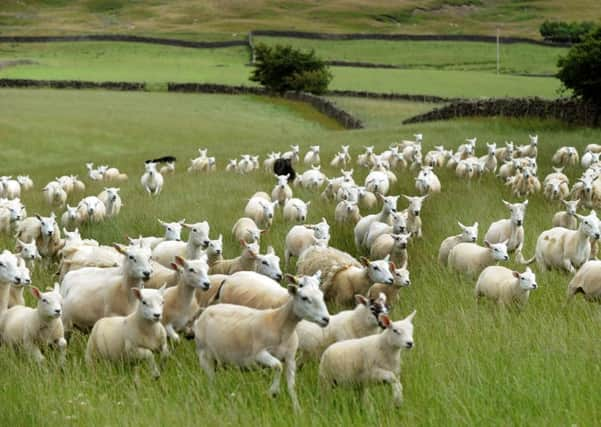Police stage ID parade with SHEEP after farm thefts


A total of 14 farmers from both sides of the Pennines identified 116 sheep as belonging to them, a jury heard.
Sheep farmers Charles Raine, 66, who is known as Neville, his nephew Phillip Raine, 46, and Phillip’s 41-year-old partner Shirley Straughan, are on trial at Teesside Crown Court where they deny a charge of conspiracy to use criminal property.
Advertisement
Hide AdAdvertisement
Hide AdThey farm in the Bowes area of County Durham, close to the A66.
Sam Faulks, prosecuting, said the family members agreed to use stolen sheep, which had their means of identification removed.
He said: “Investigations by local police led to a number of sheep parades being held at Hazel Gill (where Phillip Raine and his partner lived), and various locations.”
Of the 116 identified, 111 were at Hazel Gill, three from High Wales, where Straughan farmed, and two from a parcel of land referred to in court as the Otter Trust.
Advertisement
Hide AdAdvertisement
Hide Ad“These sheep had gone missing at various times between 2010 and 2013,” the Crown said.
Sheep have ear tags to identify them and some farmers also brand their horns, and in many cases these were removed, Mr Faulks said.
“It is inconceivable sheep from Cumbria, Durham and North Yorkshire should all end up by accident at the Otter Trust, Hazel Gill and High Wales.
“It is inconceivable so many ear tags and horn burns were removed. This was deliberate, this was organised, this was orchestrated.
“In short, they were in it together.”
Advertisement
Hide AdAdvertisement
Hide AdHe said: “Any farmer knows to remove sheep markings is plain wrong, as wrong as you would regard grinding out a car registration plate or chassis number.”
He said most of the sheep were found at Hazel Gill as it was more remote than Neville Raine’s Coach and Horses farm by the A66, and it had a boundary wall. “It was regarded as a safe house for stolen sheep,” he said.
A police officer found a number of ear tags in a jar at Hazel Gill, and analysis showed they had been clipped off with a cutter.
The defendants were well-connected by family and business links, with Neville Raine said to control the finances, the jury heard.
Advertisement
Hide AdAdvertisement
Hide AdMr Faulks said: “They were not living the high life, far from it. It may be this offending allowed them to get by. It was a family business and family offending.”
Opening his case, he told the jury they may have passed through the area on their way to the Lake District, and outlined Barnard Castle and its antique shops, then Bowes and on to Brough.
“In that corridor, you are blessed with a dual carriageway and a view of some frankly desolate countryside.
“You may not have given that area another thought, other than how bleak the place looks.
Advertisement
Hide AdAdvertisement
Hide Ad“You may be thinking not a lot happens here. You would be wrong. That corridor is alive with sheep farming.
“For many farmers, sheep will be their livelihoods. Where you have flocks, and the value of ewes is £50-£250 or more, spread out over several hundred acres of Teesdale, it is important there is trust between farmers.”
He said it is expected that if a sheep “wanders on to another farm”, it would be repatriated.
Mr Faulks said: “In all cases the defendants deny that they knew that the sheep were missing. Further, they do not accept knowing that interfering with sheep markings was illegal.”
Advertisement
Hide AdAdvertisement
Hide AdPhillip Raine told police “the whole thing was a terrible mistake” and he knew nothing about stolen sheep being on his farm, which had around 350 ewes and 500 lambs, Mr Faulks said.
The case continues.